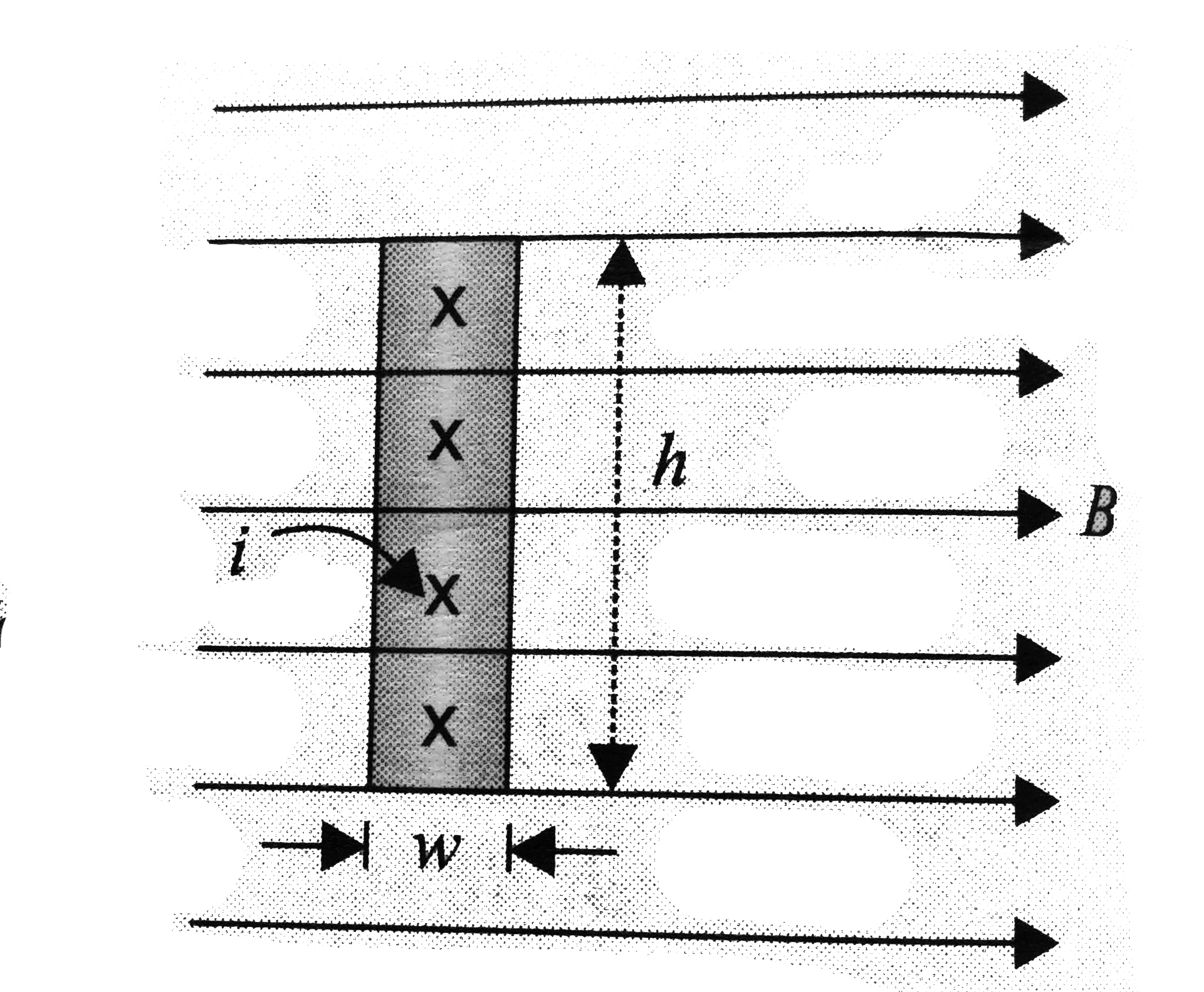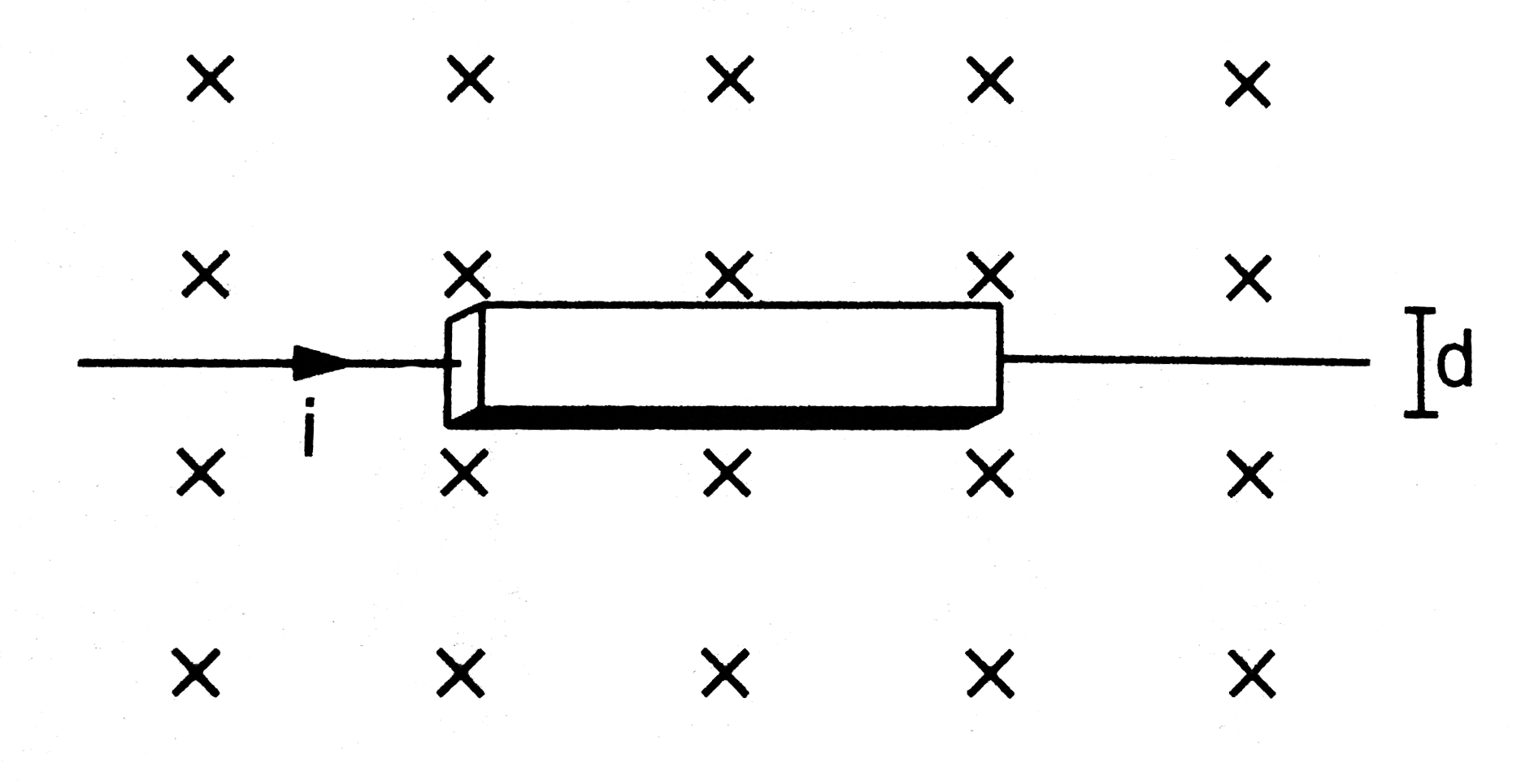Statement I: If an electric field is applied to a metallic conductor, the free electrons experience a force but do not accelerate, they only drift at a constant speed.
Statement II: The force exerted by the electric field is completely balanced by the Coulomb force between electrons and protons .
Statement I is true, Statement II is True, Statement II is a correct explanation for Statement I.
Statement I is True, Statement II is True, Statement II is not a correct explanation for Statement I.
Statement I is True, Statement II is False.
Statement I is False, Statement II is True.
The correct Answer is:C
To analyze the given statements about the behavior of free electrons in a metallic conductor when an electric field is applied, we can break down the reasoning step by step.
1. Understanding Free Electrons in a Conductor:
- In a metallic conductor, there are free electrons that can move under the influence of an electric field. These electrons are not bound to any particular atom and can drift through the lattice of positively charged metal ions.
Hint: Recall that metals have a sea of free electrons that allow them to conduct electricity.
2. Effect of Electric Field:
- When an electric field is applied, the free electrons experience a force due to the electric field. The direction of this force is opposite to the direction of the electric field since electrons are negatively charged.
Hint: Remember the relationship between electric field (E), charge (q), and force (F = qE).
3. Initial Acceleration:
- Initially, the electrons will accelerate due to the force exerted by the electric field. The acceleration can be expressed as a=Fm=eEm, where e is the charge of the electron and m is its mass.
Hint: Use Newton's second law to relate force, mass, and acceleration.
4. Collisions with Atoms:
- As the electrons accelerate, they will collide with the fixed positively charged ions in the conductor. These collisions are frequent and random, which impede the continuous acceleration of the electrons.
Hint: Consider how collisions affect the motion of particles in a medium.
5. Drift Velocity:
- After many collisions, the electrons reach a constant average velocity known as the drift velocity. This drift velocity is not zero, but it is constant because the electrons are constantly colliding with the atoms, which balances the acceleration due to the electric field.
Hint: Drift velocity is a key concept in understanding current flow in conductors.
6. Evaluating Statement I:
- Statement I claims that free electrons do not accelerate but drift at a constant speed. This is correct; while they initially accelerate, they reach a steady drift speed due to collisions.
Hint: Think about how drift speed relates to the net motion of electrons in a conductor.
7. Evaluating Statement II:
- Statement II claims that the force exerted by the electric field is balanced by the Coulomb force between electrons and protons. This is incorrect; the force is balanced by the collision force with the lattice atoms, not by the Coulomb force.
Hint: Distinguish between the forces acting on electrons due to collisions and those due to electric fields.
8. Conclusion:
- Therefore, Statement I is true, and Statement II is false. The correct answer is that Statement I is true, and Statement II is false.
Final Answer:
- Statement I is true; Statement II is false.
- In a metallic conductor, there are free electrons that can move under the influence of an electric field. These electrons are not bound to any particular atom and can drift through the lattice of positively charged metal ions.
- When an electric field is applied, the free electrons experience a force due to the electric field. The direction of this force is opposite to the direction of the electric field since electrons are negatively charged.
- Initially, the electrons will accelerate due to the force exerted by the electric field. The acceleration can be expressed as a=Fm=eEm, where e is the charge of the electron and m is its mass.
- As the electrons accelerate, they will collide with the fixed positively charged ions in the conductor. These collisions are frequent and random, which impede the continuous acceleration of the electrons.
- After many collisions, the electrons reach a constant average velocity known as the drift velocity. This drift velocity is not zero, but it is constant because the electrons are constantly colliding with the atoms, which balances the acceleration due to the electric field.
- Statement I claims that free electrons do not accelerate but drift at a constant speed. This is correct; while they initially accelerate, they reach a steady drift speed due to collisions.
- Statement II claims that the force exerted by the electric field is balanced by the Coulomb force between electrons and protons. This is incorrect; the force is balanced by the collision force with the lattice atoms, not by the Coulomb force.
- Therefore, Statement I is true, and Statement II is false. The correct answer is that Statement I is true, and Statement II is false.
- Statement I is true; Statement II is false.
Topper's Solved these Questions
- MISCELLANEOUS VOLUME 3BOOK - CENGAGE PHYSICS ENGLISHCHAPTER - MISCELLANEOUS VOLUME 3EXERCISE - Integer Answer Type
11 Videos
- MISCELLANEOUS VOLUME 3BOOK - CENGAGE PHYSICS ENGLISHCHAPTER - MISCELLANEOUS VOLUME 3EXERCISE - True and False
3 Videos
- MISCELLANEOUS VOLUME 3BOOK - CENGAGE PHYSICS ENGLISHCHAPTER - MISCELLANEOUS VOLUME 3EXERCISE - Multiple correct Answer type
109 Videos
- MAGNETIC FIELD AND MAGNETIC FORCESBOOK - CENGAGE PHYSICS ENGLISHCHAPTER - MAGNETIC FIELD AND MAGNETIC FORCESEXERCISE - Multiple Correct Answer type
2 Videos
- MISCELLANEOUS VOLUME 5BOOK - CENGAGE PHYSICS ENGLISHCHAPTER - MISCELLANEOUS VOLUME 5EXERCISE - Integer
12 Videos
Similar Questions
When electric field is applied inside a conductor then free electron are accelerated. Their average velocity in time interval t is proportional to
View SolutionAssertion : When a potential difference is applied across a conductor, free electrons start travelling with a constant speed called drift speed.
Reason : Due to potential difference an electric field is produced inside the conductor, which electrons experience a force.
View SolutionSelect the correct statement :(Only force on a particle is due to electric field)
View SolutionWhen an electron is accelerated through a potential difference V, it experience a force F through as uniform transverse magnetic field. If the potential difference is increased to 2V, the force experoenced by the electron in the same magnetic field is
View SolutionA current i, indicated by the crosses in figure, is established in a strip of copper of height h and width w. A uniform field of magnetic induction B is applied at right angle to the strip.
(a) Calculate the drift velocity vd of the electrons.
(b) What are the magnitude and direction of the magnetic force F acting on the electrons?
(c) What should the magnitude and direction of a homogeneous electric field E be in order to counterbalance the effect of mangetic field?
(d) Calculate voltage V necessary between two sides of the conductor in order to creat this field E Between which sides of the conductor would this voltage have to be applied?
(e) If no electric field is applied from the outside, the electrons will be pushed somewhat to one side and therefore will give rise to a uniform electric field EH across the conductor until the forces of this electrostatic field EH balance the magnetic forces encountered in part (b). What will be the magnitude and direction of field EH?
Assume that n, the number of conductor electrons per unit volume is 1.1×1029m−3,h=0.02m,w=0.1cm,i=50A,andB=2T.

View SolutionStatement I: If electric potential in certain region is constant, then the electric field must be zero in this region.
Statement II: →E=−dVdrˆv.
View SolutionAn electron enters an electric field with its velocity in the direction of the electric lines of force. Then
View SolutionThe magnitude of electric field intensity E is such that, an electron placed in it would experience an electrical force equal to its weight is given by
View SolutionA currrent I is passed through a silver strip of width d and area of cross section A. The number of free electrons per unit volume is n. (a) Find the drift velocity v of the electrons. (b) If a magnetic field B exists in the region as shown in what is the average magnetic force on the free electrons? (c) Due to the magnetic force, the free electrons get accumulated on one side of the conductor along its length. This produces a transverse electric field in the conductor which opposes the magnetic force on the electrons. Find the magnitude of the electric field which will be the potential diference developed across the width of the conductor due to the electron- accumulation? The appearance of a transverse emf, when a current-carrying wire is placed in a magnetic field, is called hall effect.

View SolutionAn electron is accelerated from rest through a potential difference V. This electron experiences a force F in a uniform magnetic field. On increasing the potential difference to V', the force experienced by the electron in the same magnetic field becomes 2F. Then, the ratio (V'/V) is equal to
View Solution
